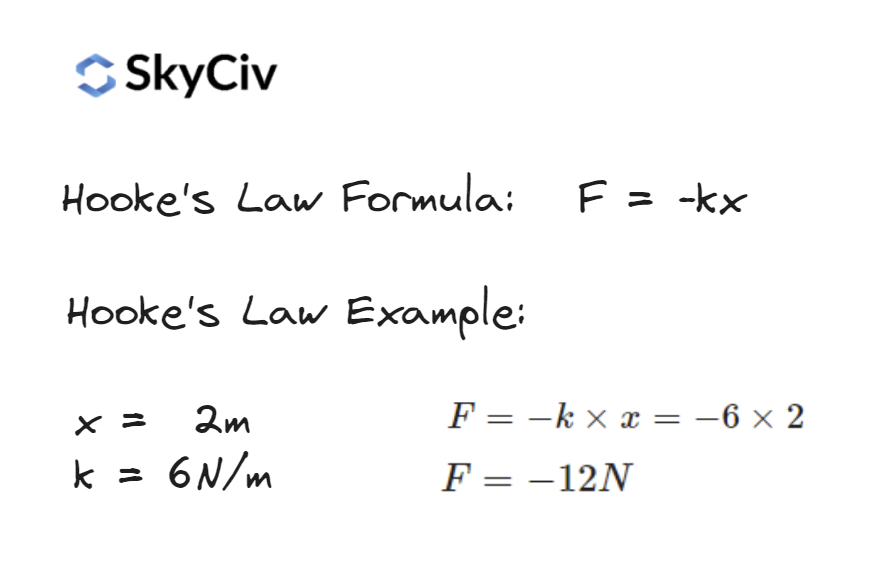Hookes Law Calculator
Hooke’s Law describes the fundamental linear relationship between force and displacement of springs and elastic materials. The SkyCiv Hooke’s Law calculator allows engineers to calculate the force in the spring due based on its extension. If the spring is in compression a negative displacement can be entered.
About the Hooke's Law Calculator (Spring Force Calculator)
What is Hooke's Law?
Hooke’s Law describes how the force needed to compress a spring is proportional to the displacement of the string from its equilibrium (original or natural) position. The same law can also be applied to the force needed to stretch or extend a spring from its natural position. Hooke’s law is highly useful for engineers due to its predictive capability allowing engineers to know exactly how elastic materials or springs will behave under different loads.
Is Hooke's Law only applicable for springs?
The behavior of springs is commonly used as an example for teaching and understanding Hooke’s Law, however Hooke’s law applies to any elastic material. An elastic material is a material that deforms when subjected to a load or force but then returns to its original shape when the load is removed. Common examples of elastic materials include rubber or steel springs. These materials are useful in engineering as they can be used to provide flexibility, dampening, impact absorption and shock absorption in a variety of contexts.
What is the k (Spring Force) constant in Hooke's Law?
The k constant or the spring force constant is a measure of the force required to compress (or extend) a spring by a unit length. For example if a spring has a k constant of 100 N/m then to compress (or extend) the spring by 1 meter 100 newtons of force is required.
Is Hooke's Law valid for all materials?
Hooke’s Law is generally applicable for elastic materials which return to their original size after being deformed. Materials that are not fundamentally elastic, such as those that experience plastic deformation may obey Hooke’s Law within a certain range of stress and strain.
What is the Hooke's Law equation?
The equation that is used in the Hooke’s Law Calculator is:

In this Hooke’s Law formula the following is represented:
- F is the force applied to the spring.
- k is the spring stiffness (or the spring force constant).
- x is the displacement of the spring from its equilibrium (original) position.
As can be seen from the equation and example above Hooke's Law is described by a linear equation making this result easy to predict so long as the material remains within its elastic limit.
Who discovered Hooke's Law?
Robert Hooke was a 17th-century English scientist who studied the fundamentals principles of springs and elasticity. His book ‘Lectures de Potentia Restitutiva’ published in 1678 describes the fundamental properties of elastic materials and springs that remain a vital part of our understanding of physics.
How to prove Hooke's Law?
Hooke’s Law can be proven with a simple experiment that measures the displacement of a spring when hung vertically and subjected to a known weight. By measuring the displacement of a spring to multiple known weights and plotting these relationships on a graph then a linear relationship should be established and the spring constant derived. If the resulting line is linear in nature (forms a straight line) then Hooke’s Law is confirmed and the gradient (or slope) of the graph represents the spring constant.
About SkyCiv
SkyCiv offers a wide range of Cloud Structural Analysis and Design Software for engineers. As a constantly evolving tech company, we're committed to innovating and challenging existing workflows to save engineers time in their work processes and designs.


